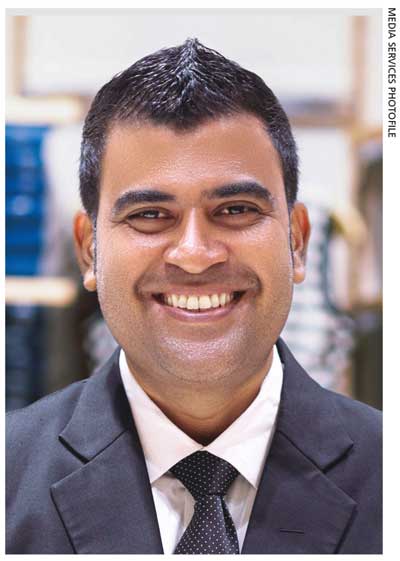Compiled by Allaam Ousman
LEVERAGING ON INNOVATION
Fawaz Mohamed reviews the role of technology in keeping pace with trends

Q: What are the latest trends and technological innovations in the fashion industry?
A: The fashion industry is constantly evolving and technology plays an important role in driving this change – in Sri Lanka as well as overseas. Accordingly, there are a number of innovations shaping the manner in which people consume fashion today.
Locally, e-commerce is growing at a rapid pace across all sectors and fashion is no exception. Many brands now sell their products online with several owning and operating their own platforms.
The benefits are twofold: consumers can access what they want more conveniently; and brands can expand their reach to foreign markets.
As for the global context, AI is being used extensively to personalise shopping experiences, predict trends and design new products, all based on people’s preferences.
Q: Could you shed some light on what influences fashion trends?
A: Social media platforms such as Instagram and TikTok have become major influencers especially for Gen Z. It’s common today for young people to regularly post photos and videos of themselves online in their best outfits, driving friends and peers to follow suit.
Q: What positives do you see in the apparel and fashion industry during these challenging economic times?
A: It’s encouraging to see the industry succeeding despite the challenges faced – and many positives have emerged.
Raw materials are increasingly sourced and produced locally, and e-commerce has enjoyed exponential growth. We source fabric from Sri Lanka instead of importing with the majority of other products also being purchased from local suppliers to support industries during these difficult times.
Moreover, we encourage the use of recycled materials, organic fabrics or water-based dyes; and many brands are adopting various technologies to minimise their environmental impact.
Q: How would you describe the competition when it comes to fashion?
A: The nature of this industry is that the marketing environment remains dynamic. Trends keep changing, competition increases and companies are developing brands rather than merely selling clothes.
Regardless of whom we’re targeting – children, teenagers, youth or adults – we make sure to understand the fashion requirements and deliver products that suit their lifestyles.
In addition, we have to combine our extensive knowledge of styles and trends, and position our offerings accordingly.
Q: And how is the burgeoning e-commerce segment impacting the retail market?
A: E-commerce makes shopping easier and more convenient as it can be done from the comfort of customers’ homes, or while on the move through their mobiles and at any time of the day.
It also facilitates longer browsing time with much less effort, enabling people to choose from a wider selection of styles than traditional bricks and mortar stores would.
For retailers, by removing the space constraints of a physical store, they now have an opportunity to offer a wider array of products from multiple local and global suppliers.
Q: In what way has social media impacted the local fashion industry?
A: Social media continues to have a significant impact on Sri Lanka’s fashion industry as it has changed the way brands interact with their customers.
Photos and videos of all products can now be previewed online and this greatly increases awareness. Behind-the-scenes footage also helps build relationships with existing and potential customers, and develops a sense of community around a brand.
And additional engagement through quick responses to questions, competitions and promotions helps create positive and memorable brand experiences.
Social media also enables us to leverage a large base of influencers in promoting brands, by launching new products and encouraging trials.
It also allows us to be connected to customers 24 hours a day, 365 days of the year; and they too can enjoy hassle free shopping at any time and day from their homes without having to visit a store.
Q: Do you believe that regional expansion could provide a fillip to the retail sector?
A: Regional expansion provides the sector with an opportunity to tap into new markets and reach a larger customer base, leading to higher revenue and profits eventually.
When this happens, through expansion either locally or globally, it enables companies to benefit from economies of scale especially in retailing. This will take Sri Lanka to the world and position the nation as a true developing country in Asia.
Q: What do you consider to be the key challenges faced by the local fashion industry?
A: Since the pandemic and the economic crisis that followed, retailers have faced many challenges from sourcing fabric to keeping pace with technology.
The growing popularity of fast fashion has made it easier for customers to purchase clothing and accessories that are trendy and reasonably priced.
While new technology presents opportunities for innovation and efficiency, it also poses challenges for the industry. Brands must adapt to changing consumer behaviours and leverage technology for sustainable production, supply chain management and engaging customer experiences.





